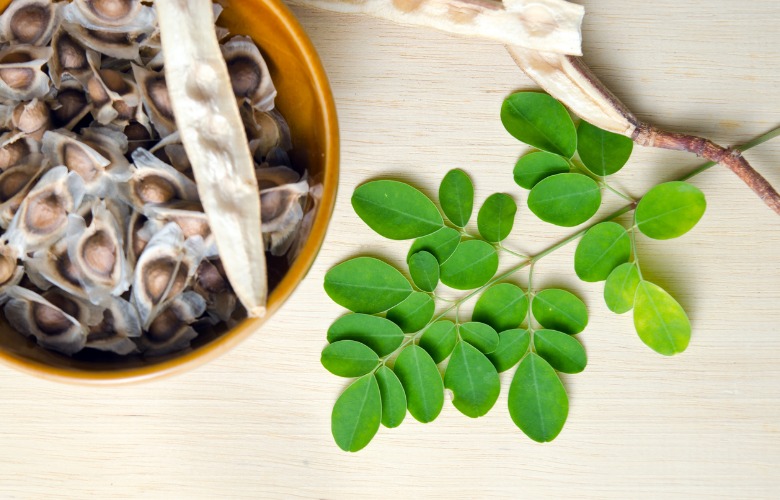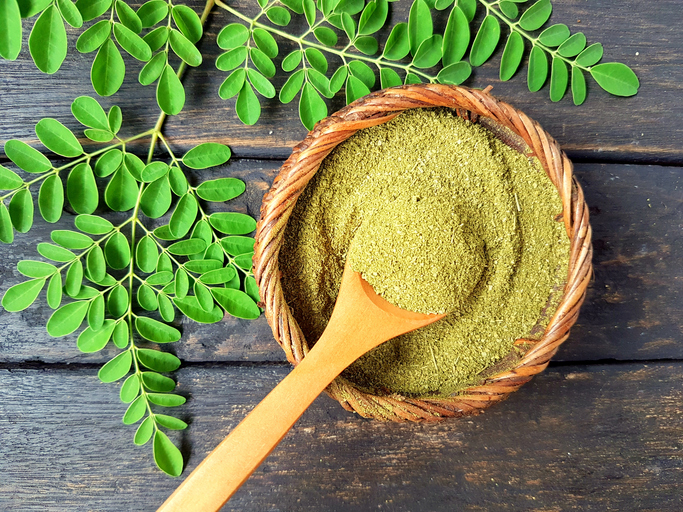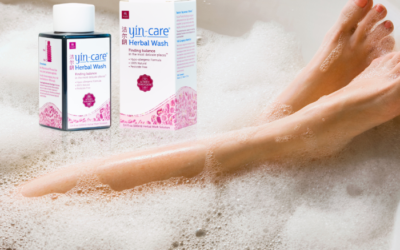Traditional Moringa Should Be Part of Your Diet
How has moringa been used for health?
Traditionally, it has been used for infections, anxiety, asthma, anemia, blackheads, chest congestion, cholera, and other illnesses. It is being studied for it’s anti-inflammatory, anti-hypertensive, anti-tumor, antioxidant, anti-ulcer, cholesterol-lowering, anti-diabetic, and hepatoprotective activities. Today it is being incorporated into cosmetic products for skin ointments conditioners that strengthen hair (3). With its wide range of health benefits, it makes sense that it has been nicknamed the “miracle tree”, “natural gift”, and “mother’s best friend” (2).
Additionally, it is a nutrient-rich plant. Moringa is high in protein, vitamins, and minerals, and it is thought to be one of the most nutritious vegetables in the world. It has been especially valuable in treating malnourished children and HIV/AIDS patients (4).
There are 13 species of Moringa, and Moringa oleifera is the most commonly used and studied (2). This plant is native to India, Pakistan, Asia Minor, Africa, and Arabia. It is now also widely grown in the Philippines, Cambodia, Central America, tropical North and South America, and the Caribbean Islands(1). This plant thrives in subtropical and tropical climates and is drought resistant [5]. This wide variety of locations and species results in slight differences in terms of nutritional content. Even with this variation of bioactive compounds due to genetic and environmental conditions, Moringa still generally has higher nutritional value than most fruits and vegetables (2).
How to Use
With so many benefits, you may be wondering how to include moringa into your diet. Extracts and ground powders made from the plant are used in dietary supplement capsules. After being dried, the leaves can be used to make a tea, similar to the way you make black or green tea. Oil extracted from the seeds of the plant can be used in place of other cooking oils(5). Fresh leaves can also be cooked and used in a variety of dishes.
The oil can be applied directly to the skin to soothe dry skin (5). Some people also use it for minor skin wounds and infections.

Health Benefits and Research of Moringa
Nutrition
Moringa’s nutritional value has been widely studied. Per milligram, Moringa has more iron than spinach, more Vitamin C than oranges, and more potassium than bananas (8). It is a great source of Vitamin A, zinc, magnesium, and copper (9). Moringa is also a good source of protein and calcium (8). Because of this, moringa is used to treat malnutrition. Moringa provides many necessary nutrients for growing children and is used as a supplement in developing countries (9). Incorporating moringa leaves into porridge has been used to aid HIV patients’ malnourishment (4).
It has been established as a nutritional option in large parts of the world, but it has been gaining status as a “superfood” in the U.S. over the past few years. Americans may be considered to be overfed, but many Americans are still deficient in micronutrients. Consuming Moringa can help you make sure you are getting the vitamins and minerals that you need (10).
Inflammation and Protecting the Heart
What is inflammation? It is a normal and protective response to harm. The immune system, blood vessels, and molecular components work together to get rid of the cause of cell injury, get rid of any damaged or dead cells from the injury, and start repairing the affected tissue (2). So if you cut your finger, your body sends white blood cells to the area. Your finger will be a little red and swollen from the process, but this is protecting the rest of your body from a potentially infected wound (11). With chronic inflammation, your body is responding to unwanted substances like cigarette smoke toxins or excess fat. The inflammation leads to the buildup of plaque in arteries. If this plaque ruptures, its contents will enter the blood, and a clot can form. This is a serious problem because this is how most heart attacks and strokes occur (11).
Moringa has been studied in animal models to see how it works as an anti-inflammatory. In one study, researchers found that mice given Moringa expressed less inflammatory markers. Mice fed a high-fat diet with Moringa had lower inflammation markers than mice who were just fed a high-fat diet (2). Active components of Moringa may be inhibiting inflammatory damage, so the animals have fewer plaques building up in their arteries (8). Scientists are still working to understand how the compounds in Moringa can affect the inflammatory process, but studies in animals suggest the Moringa leaves can be involved in the anti-inflammatory process (2).
Immune System
Moringa has been used as an immune system booster. Simply by providing necessary nutrients, Moringa helps your body and supports the immune system (9). This will make it easier for your body to fight off an infection. Receiving proper nutrition is important, especially for people with HIV/AIDS, to ward off additional infections. Moringa is being studied as a way to keep people with HIV/AIDS healthier and stronger. One study found that Moringa supplements improved HIV/AIDS patients BMI, which may improve their antiretroviral treatment outcomes (14).
Bioactive components of Moringa may directly stimulate the immune system, as well. In a study of Moringa leaves, mice given a methanol extract of Moringa leaves had increased immune responses (12). Moringa extracts have been found to act against bacteria in lab studies (9). Moringa roots, flowers, and bark juice all have antimicrobial agents, and the bark extract has antifungal activity. Leaves may have an anti-tumor effect (1). Large-scale studies suggest that flavonoids, like those found in Moringa, provide a protective effect against bacterial and viral infections (2). Moringa can also fight fungal infections. Moringa has been seen to rupture the fungal cells infecting people with athlete’s foot and tinea (8). A compound isolated from Moringa is being studied for its bactericidal and fungicidal activity.(9).
Neurological Benefits
Moringa may protect cognitive function. Moringa has been found to improve sleep and decrease muscle cramps through its activity on the central nervous system [8]. Research studies on mice have found that Moringa extracts can lower brain dysfunction and damage. Neurons, which help the brain transmit information, are better able to grow in the lab when treated with Moringa extract. This effect may be due to reduced oxidative stress (12).
These neuroprotective benefits are being studied for Alzheimer’s disease. Alzheimer’s disease results in memory loss, reduced cognition, abnormal behaviors, and personality loss. In the brain, there are lower levels of serotonin, dopamine, and norepinephrine. Rats treated with Moringa extract have seen increased levels of serotonin, dopamine, and norepinephrine (8). Moringa is being studied further for its potential benefits for Alzheimer’s patients.
Additionally, Moringa is being studied for its potential anticonvulsant abilities. Mice given Moringa leaves extract experienced better learning and memory and protected the mice against some forms of convulsion. This may mean Moringa can be a central nervous system depressant, so scientists are further researching how this extract works (13).
Hormones
Moringa has been used for thyroid disorders and balancing hormones (7). Leaf extracts have been used to regulate thyroid hormones (1). In a study of mice, the leaf extract led to lower levels of the thyroid hormone T3 and higher levels of T4. Further study is needed to better understand how this could be useful for people with hyperthyroidism (15).
Traditionally, Moringa has been used in the modification of female hormones, including its use to prevent pregnancy (1). Studies have found that some parts of the plant may have contraceptive actions. In mice, the root extract showed increased estrogen activity and decreased progesterone activity. More research is being done to fully understand how Moringa affects conception and implantation (16). Moringa is also being studied for post-menopausal women. After menopause, women’s hormones change. FSH and LH increase significantly, and these changes are associated with developing ovarian cancer. In animals, Moringa helped protect against ovarian cancer and led to killing the cancer cells (8).
Blood Sugar Regulation
Traditional Medicine in northern Tanzania incorporates the use of Moringa for lowering glucose and helping glucose metabolism (18). Moringa is being studied for its ability to improve glucose (sugar) regulation in the blood. This research is promising for people with type 1 and type 2 diabetes. In type 1 diabetes, the body doesn’t produce insulin, which maintains blood sugar levels. Type 2 diabetes occurs with insulin resistance or an inability to sense glucose levels(9). Moringa is being studied for its ability to affect both mechanisms.
Moringa can increase insulin activity and improve the body’s ability to use glucose. The compounds in Moringa may reduce insulin resistance, so the body is better able to control blood sugar without additional medicines (17). Diabetic mice given Moringa had healthier beta cells, which secrete insulin. Compounds in Moringa scavenged for reactive oxygen species, so beta cells were less likely to die [11]. Researchers have been looking at the effects in people. In a study of healthy subjects, those who received Moringa had increased insulin secretion. This suggests that compounds in Moringa may help people with type 2 diabetes (19).
Healthy Skin
As mentioned before, Moringa can promote antimicrobial activity (8). This is part of the reason it has traditionally been used for wound care. Additionally, Moringa has been seen to improve the rate at which wounds close and decreased the scar area in rats. Being treated with Moringa led to improved cell growth in the wound area (12). This means the skin is able to heal. Moringa extract formulas are being created and tested to treat wounds (20).
Moringa has a long history of cosmetic use, and components in Moringa are still being used in cosmetics. Moringa oil was used as lotion and perfume by the Egyptian, Roman, and Greek communities. It is used in cosmetics because it absorbs other compounds well and doesn’t feel greasy (21). The active ingredients may be help protect the skin from harsh environmental factors, like sun and heat. Moringa may even work to combat premature skin aging (1). Moringa extract in creams may improve skin hydration, wrinkles, roughness, and scaliness (22). In shampoos and conditioners, Moringa compounds are being used to strengthen hair (1).
Other Uses of Moringa
Even though Moringa has health benefits, it also has other uses! Moringa seeds are able to remove suspended particles in turbid water. Currently, alum, activated carbon, and ferric chloride are used for this process, but they are much more expensive than Moringa. It makes sense that researchers want to study Moringa’s ability to clear up water and remove heavy metals from it! A research project has developed a waste water treatment utilizing Moringa. Not only did it improve the water’s physical and chemical characteristics, it also helped the water’s pH. In addition to improving water clarity, the seed extracts may help inhibit bacterial growth in collected water.
This means Moringa could help prevent waterborne diseases (9).
Moringa is also being used for biodiesel. Its chemical composition makes it stable and works well even at cold temperatures. Currently, Moringa is a better sustainable biodiesel than other plants (21). The seedcakes are used as fertilizer (9). Because it is able to grow in dry or depleted soil, Moringa is beneficial in forest restoration efforts and restoring fertile soil (6).
Safety and Other Concerns
Overall, Moringa is considered to have low toxicity, and human studies haven’t shown adverse effects. Based on animal toxicity testing, genotoxic and hepatic damage can occur with very large doses. It’s estimated that this would be about 195 to 260 grams of leaves for a person (12). The FDA hasn’t established the safe dose for Moringa, but some sources suggest that it is relatively safe to take up to 6 grams every day for 3 weeks (7).
If you are pregnant, you should avoid using the root, bark, and flowers of moringa. The bioactive ingredients in these can cause uterine contractions and miscarriage. Although Moringa has been used to increase breast milk production, there isn’t much research to show how this affects the nursing baby. Avoiding Moringa while pregnant or breast-feeding is recommended (7).
Talk to your doctor before changing your supplement intake, especially if you have a chronic condition. Although Moringa is being studied for many illnesses, it’s cross-reactivity with other medicines isn’t well known.
References
1 Anwar, F., Latif, S., Ashraf, M., & Hassan Gilani, A. (2007). Moringa oleifera: a food plant with multiple medicinal uses – Anwar – 2006 – Phytotherapy Research – Wiley Online Library. Phytotherapy Research, 21(1), 17–25.
2 Leone, A., Spada, A., Battezzati, A., Schiraldi, A., Aristil, J., & Bertoli, S. (2015). Cultivation, Genetic, Ethnopharmacology, Phytochemistry and Pharmacology of Moringa oleifera Leaves: An Overview. International Journal of Molecular Sciences, 16(6), 12791–12835. https://doi.org/10.3390/ijms160612791
3 Abdull Razis, A. F., Ibrahim, M. D., & Kntayya, S. B. (2014). Health benefits of Moringa oleifera. Asian Pacific Journal of Cancer Prevention: APJCP, 15(20), 8571–8576.
4 About Moringa. (n.d.). Retrieved February 2, 2018
5 Duke, J. (1998, January 7). Moringa oleifera. Retrieved February 2, 2018
6 This “Miracle Plant” Balances Hormones & Improves Health in Many Ways. (n.d.). Retrieved February 2, 2018, from https://draxe.com/moringa-benefits/
7 MORINGA: Uses, Side Effects, Interactions and Warnings – WebMD. (n.d.). Retrieved February 2, 2018
8 Posmontier, B. (2011). The medicinal qualities of Moringa oleifera. Holistic Nursing Practice, 25(2), 80–87. https://doi.org/10.1097/HNP.0b013e31820dbb27
9 Gopalakrishnan, L., Doriya, K., & Kumar, D. S. (2016). Moringa oleifera: A review on nutritive importance and its medicinal application. Food Science and Human Wellness, 5(2), 49–56.
10 McNeilly, C. (2017, May 3). Why Moringa Is the New Superfood You Need to Know About. Retrieved February 4, 2018, from https://www.vogue.com/article/moringa-new-superfood-to-know
11 Bhatt, D. (n.d.). What is inflammation? Retrieved February 4, 2018, from https://www.health.harvard.edu/heart-disease-overview/ask-the-doctor-what-is-inflammation
12 Stohs, S. J., & Hartman, M. J. (2015). Review of the Safety and Efficacy of Moringa oleifera. Phytotherapy Research, 29(6), 796–804.
13 Bakre, A. G., Aderibigbe, A. O., & Ademowo, O. G. (2013). Studies on neuropharmacological profile of ethanol extract of Moringa oleifera leaves in mice. Journal of Ethnopharmacology, 149(3), 783–789. https://doi.org/10.1016/j.jep.2013.08.006
14 Tshingani, K., Donnen, P., Mukumbi, H., Duez, P., & Dramaix-Wilmet, M. (2017). Impact of Moringa oleifera lam. Leaf powder supplementation versus nutritional counseling on the body mass index and immune response of HIV patients on antiretroviral therapy: a single-blind randomized control trial. BMC Complementary and Alternative Medicine, 17(1), 420.
15 Tahiliani, P., & Kar, A. (2000). Role of Moringa oleifera leaf extract in the regulation of thyroid hormone status in adult male and female rats. Pharmacological Research, 41(3), 319–323. https://doi.org/10.1006/phrs.1999.0587
16 Shukla, S., Mathur, R., & Prakash, A. O. (1988). Antifertility profile of the aqueous extract of Moringa oleifera roots. Journal of Ethnopharmacology, 22(1), 51–62.
17 Vergara-Jimenez, M., Almatrafi, M. M., & Fernandez, M. L. (2017). Bioactive Components in Moringa Oleifera Leaves Protect against Chronic Disease. Antioxidants (Basel, Switzerland), 6(4). https://doi.org/10.3390/antiox6040091
18 Lunyera, J., Wang, D., Maro, V., Karia, F., Boyd, D., Omolo, J., … Comprehensive Kidney Disease Assessment For Risk factors, epidemiology, Knowledge, and Attitudes (CKD AFRiKA) Study. (2016). Traditional medicine practices among community members with diabetes mellitus in Northern Tanzania: an ethnomedical survey. BMC Complementary and Alternative Medicine, 16(1), 282. https://doi.org/10.1186/s12906-016-1262-2
19 Anthanont, P., Lumlerdkij, N., Akarasereenont, P., Vannasaeng, S., & Sriwijitkamol, A. (2016). Moringa Oleifera Leaf Increases Insulin Secretion after Single Dose Administration: A Preliminary Study in Healthy Subjects. Journal of the Medical Association of Thailand = Chotmaihet Thangphaet, 99(3), 308–313.
20 Chin, C.-Y., Jalil, J., Ng, P. Y., & Ng, S.-F. (2018). Development and formulation of Moringa oleifera standardised leaf extract film dressing for wound healing application. Journal of Ethnopharmacology, 212, 188–199. https://doi.org/10.1016/j.jep.2017.10.016
21 Nadeem, M., & Imran, M. (2016). Promising features of Moringa oleifera oil: recent updates and perspectives. Lipids in Health and Disease, 15(1), 212. https://doi.org/10.1186/s12944-016-0379-0
22 Jadoon, S., Karim, S., Bin Asad, M. H. H., Akram, M. R., Khan, A. K., Malik, A., … Murtaza, G. (2015). Anti-Aging Potential of Phytoextract Loaded-Pharmaceutical Creams for Human Skin Cell Longetivity. Oxidative Medicine and Cellular Longevity, 2015, 709628. https://doi.org/10.1155/2015/709628
23 Ma 02115 +1495 1000. (2012, September 18). Antioxidants: Beyond the Hype. Retrieved February 4, 2018, from https://www.hsph.harvard.edu/nutritionsource/antioxidants/
24 Anudeep, S., Prasanna, V. K., Adya, S. M., & Radha, C. (2016). Characterization of soluble dietary fiber from Moringa oleifera seeds and its immunomodulatory effects. International Journal of Biological Macromolecules, 91, 656–662. https://doi.org/10.1016/j.ijbiomac.2016.06.013
25 Sadek, K. M. (2014). Chemotherapeutic efficacy of an ethanolic Moringa oleifera leaf extract against chromium-induced testicular toxicity in rats. Andrologia, 46(9), 1047–1054. https://doi.org/10.1111/and.12196
26 Moringa | FAO | Food and Agriculture Organization of the United Nations. (n.d.). Retrieved February 2, 2018, from http://www.fao.org/traditional-crops/moringa/en/
27 Barakat, I. A. H., Khalil, W. K. B., & Al-Himaidi, A. R. (2015). Moringa oleifera extract modulates the expression of fertility related genes and elevation of calcium ions in sheep oocytes. Small Ruminant Research, 130, 67–75. https://doi.org/10.1016/j.smallrumres.2015.06.011
28 Singh, M. (2015, September 21). My Mom Cooked Moringa Before It Was A Superfood. Retrieved February 2, 2018, from https://www.npr.org/sections/goatsandsoda/2015/09/21/439509739/mother-knows-best-when-it-comes-to-cooking-with-moringa
29 NIH Celebrates Earth Day 2008 – The NIH Record -March 21, 2008. (2008, March 21). Retrieved February 2, 2018, from https://nihrecord.nih.gov/newsletters/2008/03_21_2008/story4.html



